Steve Body
Welcome to Steve Body's gallery. Steve is displaying a number of items which illustrate a range of materials and techniques:Some early work here – five dibbers to practice the skew. The ‘metric one’, marked out in cm (doesn’t seem quite right really, does it?) is in beech. Then, left to right, it’s purple heart, robinia, oak and ash. The two larger ones are about 10” long (the inch lines are a dead give away). The finish for all of them is two coats of sanding sealer. Although the recipients have said they’re ‘too good to use’, that’s what they’re made for. |
|
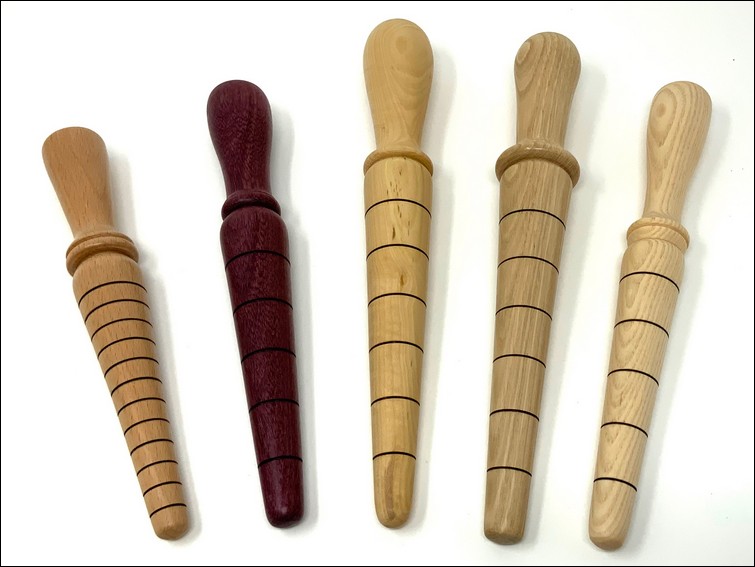 |
|
| One of our neighbours had a new kitchen fitted and a couple of large off-cuts of the 44mm thick, laminated worktops were put out as rubbish. I made this 16” diameter fruit platter for them, out of two pieces – the dish you can see and the foot, about 1/3 of that diameter, to give it a little more elegance. It turned fairly easily but the laminating glue took the edge off the tools quite quickly. It’s finished in food-safe oil. |
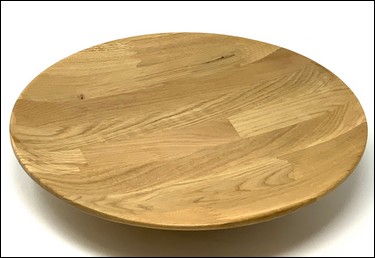 |
| At one of the NWWA club training days in 2019, I worked under the watchful eye of Bob Sawyer on turning a natural edge piece (and I have Bob to thank for the wood). It’s a beautiful piece of elm burr, about 8” in diameter. I deliberately left it thick to show off the texture of the ‘rim’. Finishing oil was used to enhance the natural figuring in the wood. |
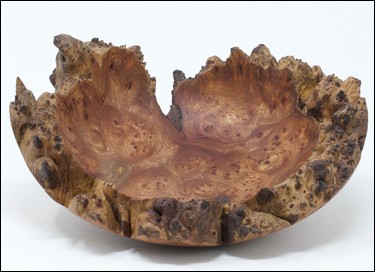 |
| The bowl is in hickory with a padauk insert rim. This was inspired by one of the professional demonstrators (I think in 2018). I was careful to align the grain direction of bowl and rim insert and so far, it’s stayed put! Making the insert ring of padauk was tricky and I thought for a long time about whether to cut into the circumference of the padauk ‘donor’ first or whether to start by making a groove in the end. I decided that as I could easily remove the ring at whatever depth I chose, it was better to get the inner and outer dimensions of the ring sorted whilst it was still on the donor wood. I repeatedly test-fitted the bowl to the padauk rim whilst the latter was still on the lathe. In finishing it, I discovered the need to use something hard and flat as a backing to the sanding material. The two woods being of different hardness, meant that the padauk initially ‘sank’ within the rim of hickory |
|
 |
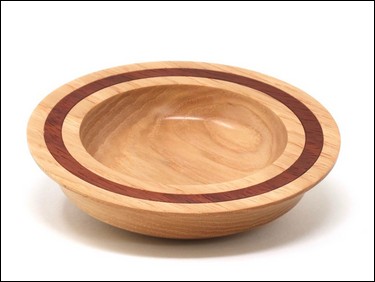 |
I wouldn’t describe myself as an avid pen turner but I do enjoy using interesting scraps of wood. From left to right these are in oak, tulipwood, African blackwood, tulipwood again and coloured ply, cut on the angle to produce a parabolic effect with the layers. I prefer to keep slim-line pens slim, rather than ‘waisted’ as often seen but for practical reasons, usually include an ‘easy to hold’ bulge at the nib end. All are finished in sanding sealer and wax, except for the African blackwood, which is oiled. |
|
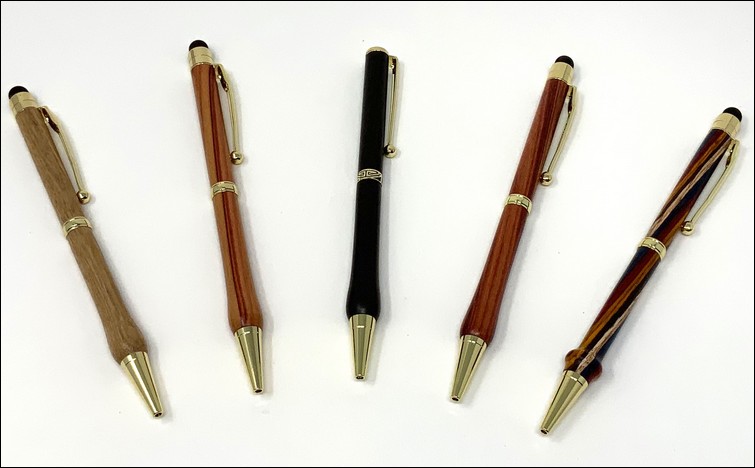 |
|
| A spalted apple bowl, about 4” in diameter and height. I nearly didn’t use this piece of wood as it seemed quite porous but in fact, it’s taken a reasonable finish with sanding sealer and microcrystalline wax. A simple piece, turned purely for the spalting effects in the wood. |
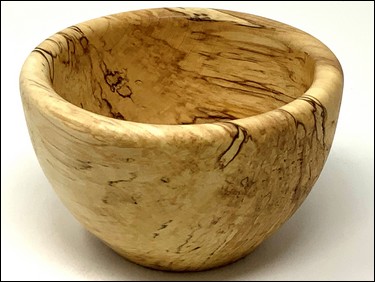 |
This was a design opportunity created by a severe misjudgement when hollowing out an 8” diameter, cored sweet chestnut blank. I went down the inside, much more steeply than the curve followed by the cored blank on the outside. Voila! A lampshade. I reverse mounted the sweet chestnut and finished the ragged hole in the bottom to almost 1/3 the bowl’s diameter. I then turned a conveniently shaped piece of padauk (thank you hickory bowl rim donor) and made a foot for the piece, convincing myself and anyone else who’d listen that it was what I’d intended all along. It was a satisfying piece to make, having turned a disaster into a piece worth putting a finish on – sanding sealer and then three-stage wax, finishing with carnauba. |
|
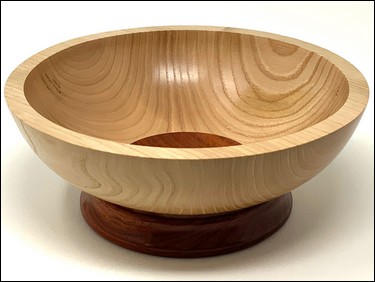 |
 |
| One of the reasons I turn wood is because it looks good on its own. Just a simple sweet chestnut bowl, about 8” in diameter, finished with sanding sealer and buffed |
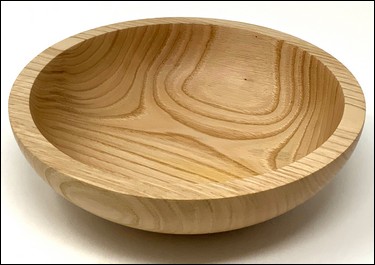 |
A neighbour’s daughter got married a couple of years ago and, having made her some natural flower pots for the table decorations, out of wet apple branches, complete with moss and lichens attached, the groom to be asked me if I could make a ring box. When I’d found out what a ring box was, I explained that wet apple would dry and warp horribly in the three months until the wedding. I had this piece of black walnut, with attractive figuring and so decided to use that. I wanted to make it a swivel lid box. In all my internet researches none of them showed a way of hinging the lid without at least one plugged hole in the top or bottom where the pivot pin was inserted. I then found a few rare earth magnets that I’d had lying around for some time and they provided the answer. The pivot pin is stainless steel and despite some theories saying that it’s not magnetic, mine is. I very, very carefully drilled two holes in the touching edges of the top and bottom – and even got them to line up with the grain and concentrically with the already-turned box. Note to self: next time, drill the holes, put the pin in and then turn the box. I used jam chucks a lot in the final turning. The pin is glued into the lid and held into the base by a rare earth magnet at the bottom of the base hole. The box closes by the alignment of two rare earth magnets at the front of each half. Another note to self: check which way round you put the magnets into their holes. Get it wrong and they hold the box lid just off closed. The lining is self-adhesive red baize, on shaped plastic sheet formers, held in by discretely placed drops of CA glue. |
|
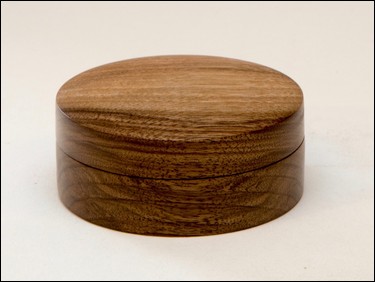 |
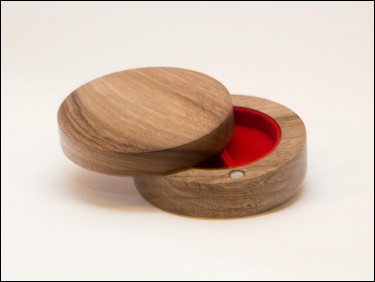 |
 |
|
I've recently been pursuing an Olivewood binge. Olivewood is a relatively expensive timber, the cost of which rapidly escalates as the section size increases. I've found that "Olive Wood Turning" (see here: www.olivewoodturning.co.uk) is very helpful and reasonably priced (as olivewood can be). These pieces are my first foray into turning hollow forms and I have to say, it's become quite addictive. The thought of turning in the dark - not being able to see the tool point - has been nowhere near as scary as I thought it might. The three hollow-forms complete with African blackwood tops are approx. 4" to 5" tall. The vase is 6" tall. All of the items are finished with Finishing Oil and then, when dry, lightly buffed (on a Beall loose cotton wheel) – nothing else added. |
|
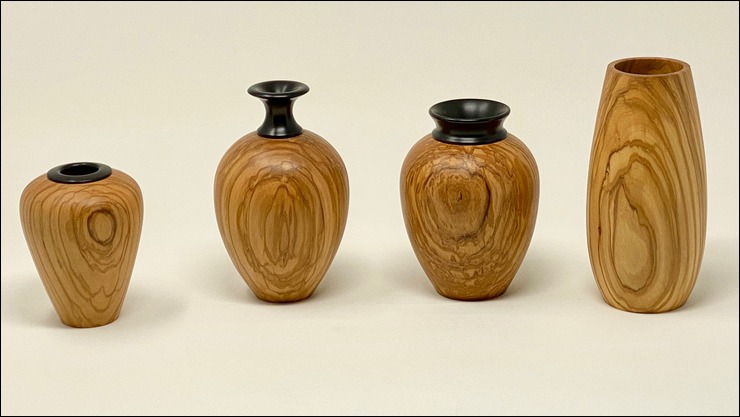 |
|
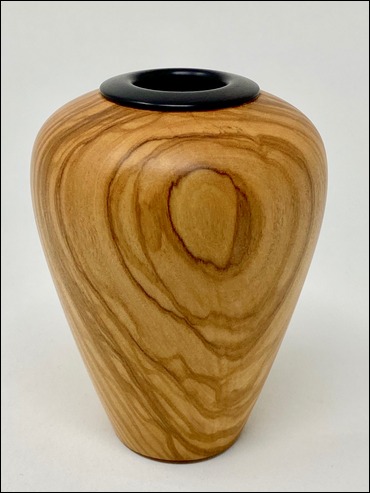 |
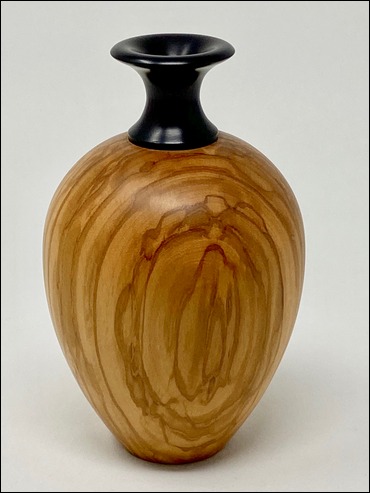 |
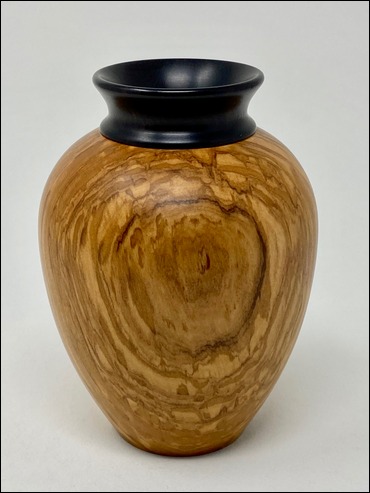 |
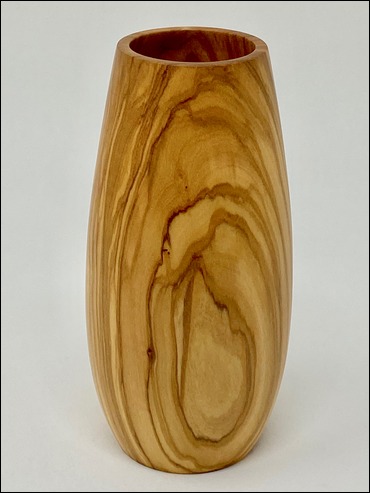 |
| <Top of Page> |
|
